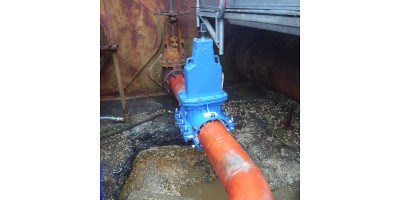CSNRI, AVT (Advanced Valve Technologies), and GeoTree are all part of ClockSpring|NRI. CSNRI specializes in composite repairs, AVT manufacturers insertion valves for the water industry, and GeoTree delivers structural strengthening and geopolymer rehabilitation solutions.
Recently, CSNRI colleagues, who had a long-term working partnership with a UK oil refinery, were made aware of an issue with the refinery’s fire suppression system. Vital refurbishment work was required on a 1 million+ gallon seawater storage tank that feeds the system. Refinery engineers realized the valve which should isolate the tank from the remainder of the fire system, was seized and could not be closed.
The operators needed a way to install a valve without shutting off the water supply that the plant relies on for its fire protection. Having worked with CSNRI, they turned to the team for support. CSNRI immediately recommended they use AVT’s insertion valve.
The AVT EZ Valve, a valve that can be installed without the need to shut off the water, has been used widely across the U.K. and U.S. within water authority systems but its installation in industrial applications in the U.K. is, so far, limited.
Once the decision was made that the EZ Valve would be able to resolve the issue, the team at CSNRI contacted their AVT colleagues who would carry out the install, Regional Account Director Jason Taylor, and Engineering Manager Lee Kirkham.
The 8” valve was installed on an exposed carbon steel line in a relatively cramped area. The EZ Valve is installed using a low-profile EM (End Milling) machine which mills a 120o slot across the top of the pipe and enables a resilient wedge gate to be inserted. The millings created, or the swarf is flushed out of the valve during the milling process by the pressure of the water in the pipe, meaning the quality of the water is maintained.


